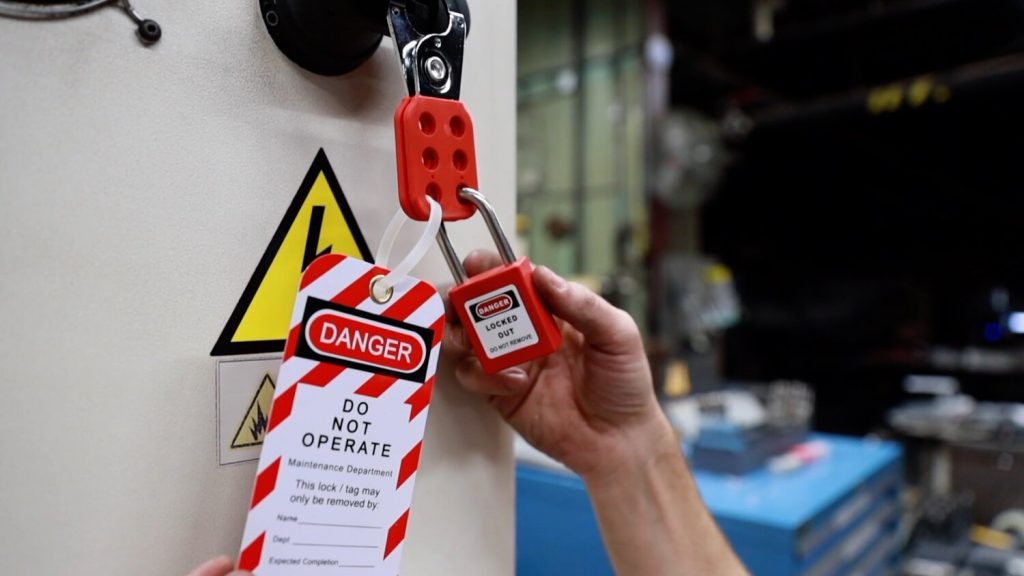Lockout/Tagout Procedures in Canadian Workplaces

Safeguarding Workers: Employer Responsibilities for Lockout/Tagout Procedures in Canadian Workplaces
Lockout/tagout (LOTO) procedures are essential safety protocols designed to protect workers from hazardous energy sources during equipment maintenance, repair, or servicing. In Canadian workplaces, adherence to LOTO procedures is mandated by occupational health and safety regulations to prevent accidents, injuries, and fatalities. Employers have a legal and moral obligation to ensure their employees are trained and equipped to work safely with lockout/tagout procedures. This article will delve into the requirements and responsibilities of employers concerning lockout/tagout procedures, emphasizing the importance of comprehensive training, effective implementation, and ongoing compliance.
- Regulatory Framework:
- Occupational health and safety legislation in Canada, both at the federal and provincial/territorial levels, mandates the implementation of lockout/tagout procedures to protect workers from the unexpected release of hazardous energy sources.
- Federal regulations, such as the Canada Labour Code, and provincial/territorial regulations, such as the Occupational Health and Safety Act (OHSA) in Ontario or the Workplace Health and Safety Act in Alberta, outline specific requirements for lockout/tagout programs, including training, procedures, and equipment standards.
- Employer Responsibilities:
- Employers have a primary responsibility to establish and maintain effective lockout/tagout programs in their workplaces. This includes:
- Developing written lockout/tagout procedures specific to each piece of equipment or machinery that requires servicing, repair, or maintenance.
- Providing appropriate lockout/tagout devices, such as locks, tags, and hasps, to secure energy isolation points and prevent accidental energization.
- Conducting comprehensive hazard assessments to identify and evaluate potential sources of hazardous energy and associated risks.
- Ensuring that all affected employees receive thorough training on lockout/tagout procedures, including proper equipment use, identification of energy sources, and recognition of lockout/tagout devices.
- Implementing a system for periodic inspection, testing, and maintenance of lockout/tagout devices and procedures to verify effectiveness and compliance.
- Employers have a primary responsibility to establish and maintain effective lockout/tagout programs in their workplaces. This includes:
- Comprehensive Training:
- Proper training is critical to the success of a lockout/tagout program. Employers must ensure that all employees who work on or near equipment with potential hazardous energy sources receive adequate training on lockout/tagout procedures.
- Training should cover:
- The purpose and importance of lockout/tagout procedures.
- The identification of energy sources and associated hazards.
- Proper procedures for applying and removing lockout/tagout devices.
- Communication protocols for coordinating lockout/tagout activities with other workers or contractors.
- Emergency response procedures in the event of unexpected energization or incidents during lockout/tagout.
- Effective Implementation:
- Effective implementation of lockout/tagout procedures requires clear communication, collaboration, and coordination among all stakeholders, including employers, supervisors, and workers.
- Employers should establish a formalized process for the application and removal of lockout/tagout devices, including documented procedures, checklists, and authorization requirements.
- Adequate resources, such as lockout/tagout kits, signage, and equipment-specific procedures, should be readily available to employees to facilitate compliance with lockout/tagout requirements.
- Ongoing Compliance:
- Lockout/tagout procedures must be consistently followed and enforced to maintain workplace safety. Employers should regularly review and update lockout/tagout procedures in response to changes in equipment, processes, or regulations.
- Conducting periodic audits and inspections of lockout/tagout practices helps identify areas for improvement and ensures ongoing compliance with regulatory requirements.
Lockout/tagout procedures are indispensable safeguards for protecting workers from hazardous energy sources in Canadian workplaces. Employers play a pivotal role in ensuring the safety and effectiveness of lockout/tagout programs through comprehensive training, effective implementation, and ongoing compliance efforts.
By fulfilling their responsibilities to develop, implement, and enforce lockout/tagout procedures, employers demonstrate their commitment to prioritizing workplace safety and preventing accidents, injuries, and fatalities related to hazardous energy exposure. Through proactive risk management, employee empowerment, and adherence to regulatory requirements, employers can create safer work environments where workers can perform their duties with confidence and peace of mind.
Categories
- Aerial Lift
- ATV Training
- Bear Awareness
- Chainsaw Training
- Confined Space
- Defensive Driving
- Forklift Training
- Lockout Tagout
- Online Safety Training
- Overhead Crane
- Pipeline Construction Safety Training
- Propane Handling
- Safety Training Benefits
- Scissor Lift
- Skid Steer Training
- Space Awareness
- TDG
- Telehandler Forklift
- Traffic Control
- Train the Trainer course
- Training Course
- Uncategorized
- WHMIS
- Workplace Harassment and Violence Preventiont
